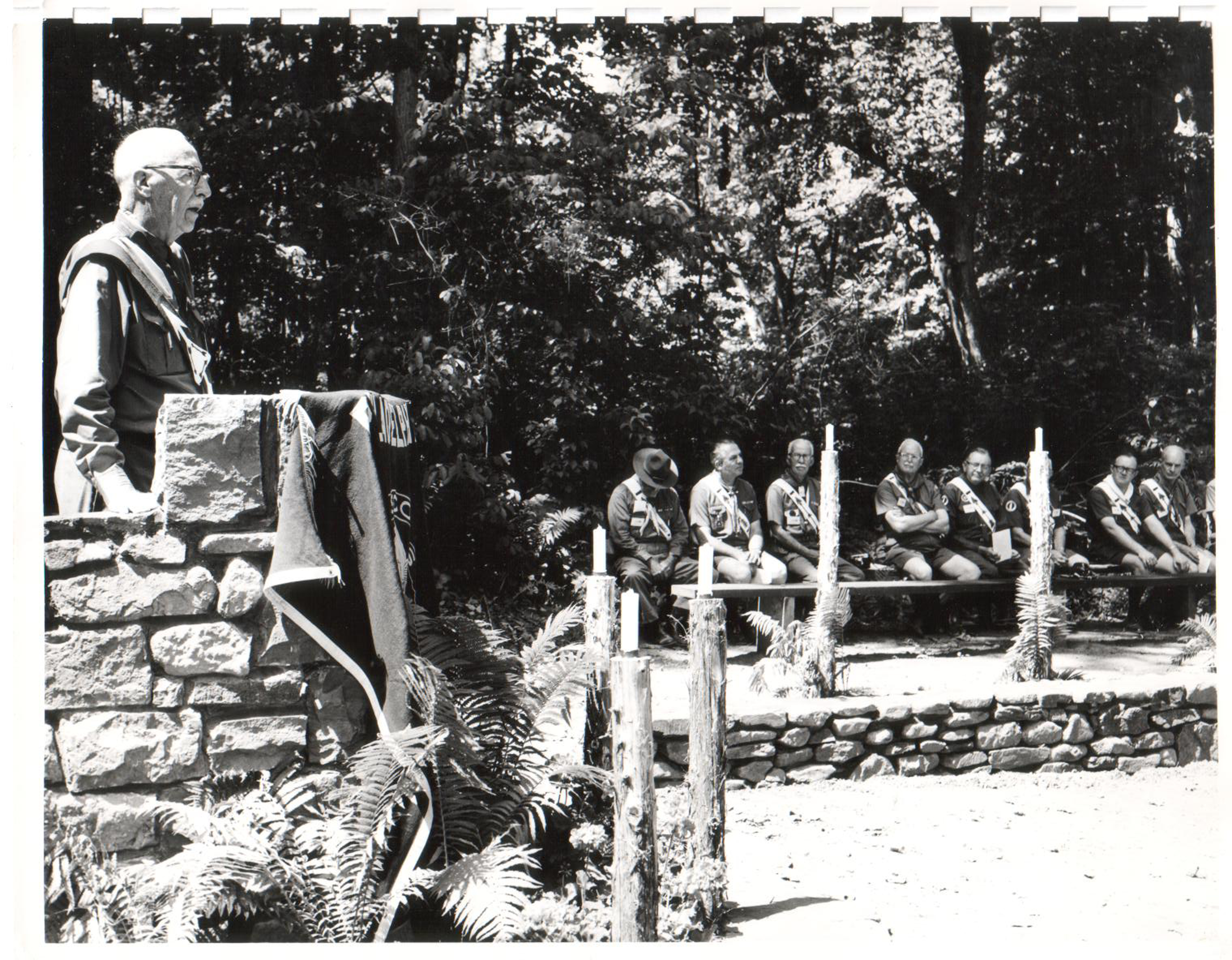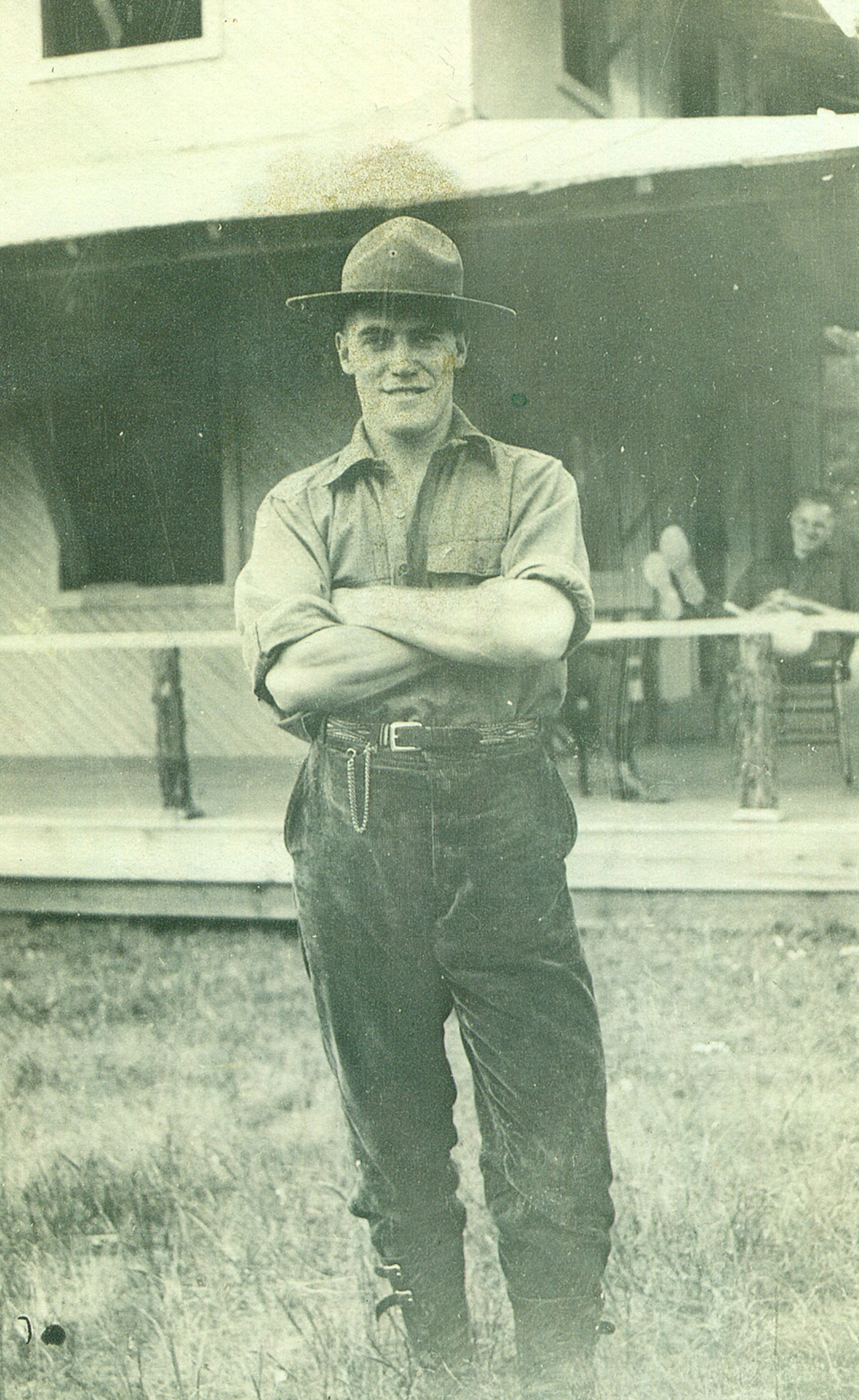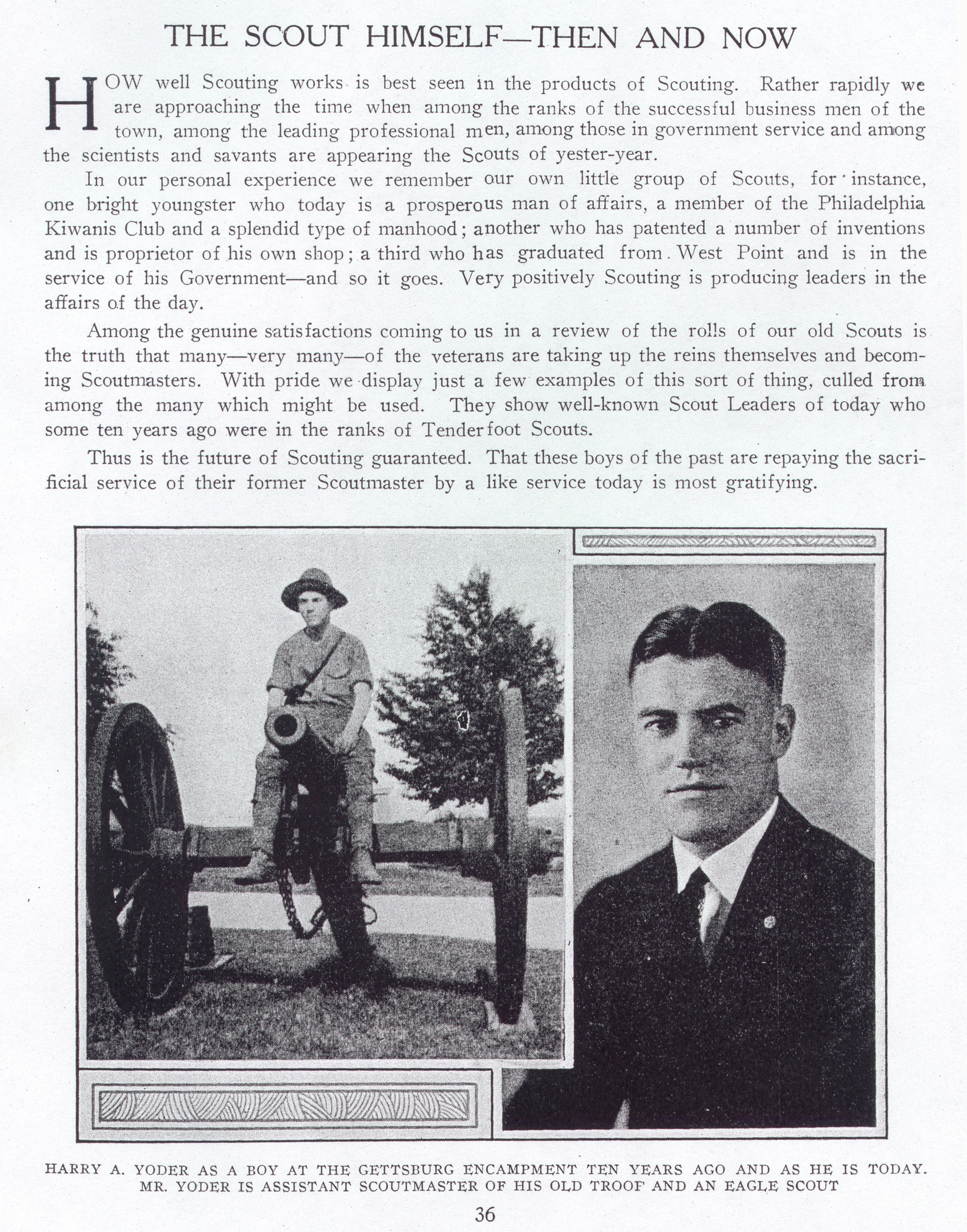First, Second and Third Degrees
The original Constitution of the Wimachtendienk written in 1916 describes the levels of membership as Pledge, First Degree and Second Degree. Although they are not spelled out in a separate article in the Constitution they are referred to in the section entitled Insignia as follows:
The tortoise shall be the general insignia of the order:
- for the first degree the insignia shall be the arrow superimposed on the back of the tortoise;
- for the second degree the insignia shall be the triangle superimposed on the back of the tortoise.
- The pin of the order shall bear the above insignia;
- the pledge pin shall be the arrow.
The Pledge was the candidate who participated in the public induction ceremony at Treasure Island during the camping season and is most similar to today’s Ordeal Honor.
The First Degree was given to the Pledge who completed his initiation during the October annual “member’s only” meeting of the Lodge back in Philadelphia and is most similar to the Brotherhood Honor of today.
The Second Degree was given to a member of the Wimachtendienk whose life and service was far above the other members and is most similar to today’s Vigil Honor. The Second Degree was originally conceived by Goodman as being given to someone who did a heroic lifesaving type of deed.
By the late teens leaders of the Wimachtendienk decided to reorganize the honor levels in the Order. The term Pledge was dropped. A Scout initiated at summer camp would henceforth be called First Degree. What had previously been called First Degree would now be called Second Degree. The Second Degree would have a separate and distinctive ceremony from the one given at camp and no longer would be considered the second half of the initiation ceremony. The old Second Degree would be named the Third Degree.
These decisions were ratified in 1920 in the Second Constitution of Wimachtendienk:
5. DEGREE
A. Members attain the first degree through regular initiation at camp.
B. The second degree is conferred upon the first degree candidates present at the ceremonials in the city in the fall and spring.
C. The third degree shall be open to these members, in good standing, who are elected thereto by the third degree members, by reason of some heroic act, exemplary of the principles of the order, or of some special contribution to the welfare and spirit of the lodge. There shall at all times be at least one third degree member for each fifty active members of the lodge.
2, Ceremonies, OA, Scouting


